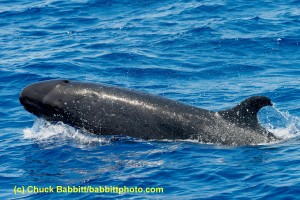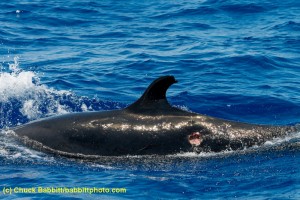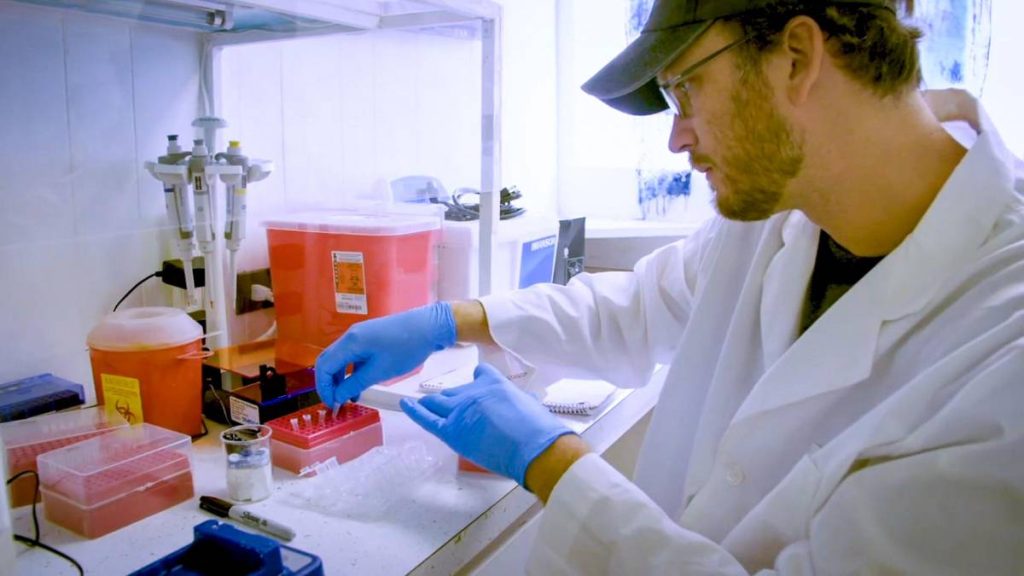Stranded Whale Held Line of History with Researchers
A false killer whale that washed ashore Saturday near Papakolea Green Sand Beach on the southern portion of the Big Island was not just any whale.
Dr. Robin Baird, a Research Biologist with Cascadia Research Collective, said the whale, identified as HIPc198, is believed to be around 17 years old and had been tracked throughout the Hawaiian Islands since 2004.
The 1,300-pound, 13-foot-three-inch female had been spotted in areas off the Big Island and Oahu almost every year since 2008.
Not only was the whale familiar to researchers, but it belonged to the insular false killer whale group that roams the island chain. The whale group has a distinctive DNA.
The group consists of about 200 total whales, according to Baird, who also noted that the group was recently listed as endangered.
“NOAA is responsible for preventing mammal species from going extinct and our main goal is to recover the species,” said David Schofield, NOAA Regional Coordinator for the Pacific Island Region. “Getting a call in for a stranding, being able to do a full necropsy on the whale, and then having the partnership with Cascadia Research to understand the life history of this individual is extremely important, and this is a very high profile case.”
While the reason of death is not yet certain, Schofield told Big Island Now that there is potential that the whale could have suffered from a type of heart disease or failure.
“The only thing we can say right now is that there seems to be some evidence of heart disease. In these types of situations, literally hundreds of samples are taken from different organ systems and sent to the mainland and other laboratories for different types of analysis to look for different types of disease processes. Getting the results of all those tissue samples will take weeks to months,” Schofield said.
Tom Elliot, the Big Island point of contact for station strandings, said the whale was transported from its spotted location near South Point to Kona before being flown to Oahu for its necropsy.
Elliot told Big Island Now that efforts from a member of the public who had a truck and winch made the operation possible.
“What we were able to do was explain to him what was needed and how we needed to get the animal off the site. He was able to winch the animal into his truck. As you can imagine, it was not easy,” Elliot said. “We got it off the rocks, into his truck, and to his house by sunset.”
From there, Elliot says the whale was transported to Kona for an early Sunday flight to Oahu.
“The individual who offered his time was willing to drive the animal to Kona, nearly driving all night, to meet us at 4:30 a.m. so that our team in Kona could prepare the animal for shipping to Oahu,” Elliot said. “The volunteer handled everything with care and followed our instructions and procedures.”
Baird has been studying the residence population of 200 false killer whales for many years. He said the whale was a catalog member, meaning it was photographed numerous times over the years and is recognized by distinctive characteristics.
Photographs help researchers understand social groups within the residence of false killer whales. Three main social groups have been identified based on who the whales associate with.
Baird said the whale found Saturday belonged to cluster group three.
“Cluster three is a rarely seen cluster group,” Baird said. “The one that most people see when they observe false killer whales in Hawai’i is cluster group one.”
One point of interest for researchers is that the other two false killer whale strandings in Hawai’i over the past six years, which happened in 2010 on Molokai and 2013 at South Point, have also been members of cluster three.
“It’s interesting that the only three dead false killer whales anyone has recovered in Hawai’i over the past 15 years have all belonged to just one social group,” Baird said.
In addition, Baird said that the stranded whale had a “strange” wound on her left side when she was found dead. The wound was first discovered 11 years ago when she was initially spotted by researchers.
“False killer whales can sometimes be bitten by things like cookie cutter sharks. They usually heal quite quickly, but for some reason, her wound never healed and closed,” Baird said.
Researchers now wonder if the wound could signify a compromised immune system. It was also noted that although an adult when first observed by the group, the female whale was never seen with a calf.
“It’s uncertain if the lack of calf was due to age, or whether the injury to her left side could have impacted her ability to reproduce,” said Baird.
Members of the public who see a marine mammal stranded or in distress should keep their distance and call the local response number at 987-0765.

















